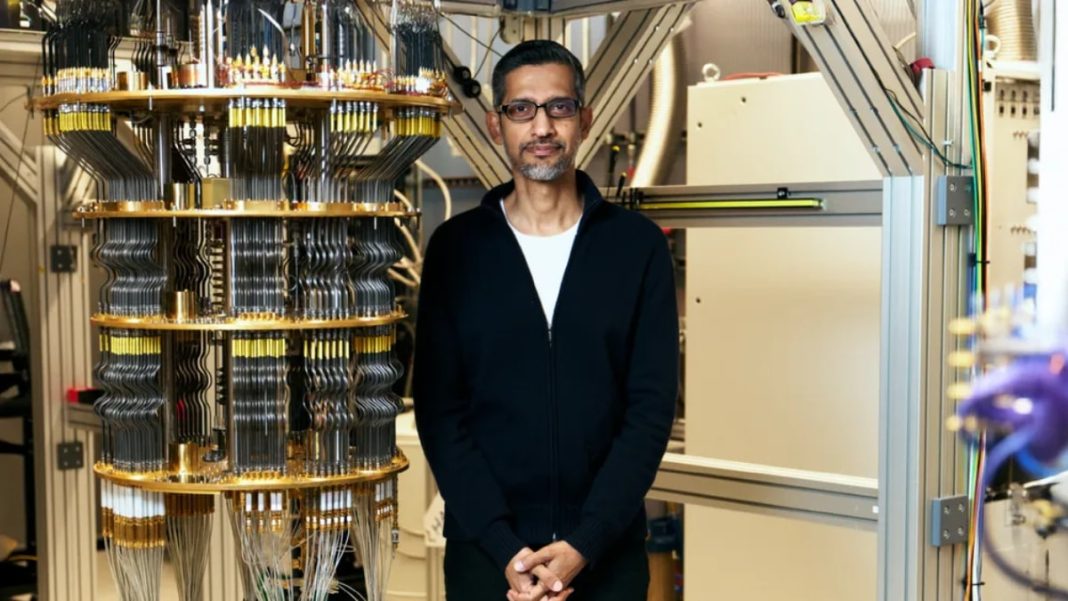Google’s Willow Chip Achieves First Verifiable Quantum Advantage
Google CEO Sundar Pichai has announced a landmark breakthrough: the company’s Willow quantum processor has achieved the world’s first verifiable quantum advantage. The new Quantum Echoes algorithm performed a specific computation 13,000 times faster than the fastest classical supercomputers, marking a significant leap toward practical quantum applications.
Key Takeaways
- Google’s 105-qubit Willow chip achieved verifiable quantum advantage.
- Quantum Echoes algorithm performed 13,000x faster than classical supercomputers.
- Breakthrough has major implications for drug discovery and materials science.
In a post on X, Sundar Pichai shared the news alongside an image of the gold-hued Willow processor. “Our Willow chip has achieved the first-ever verifiable quantum advantage,” Pichai wrote. The algorithm models atomic interactions in molecules using nuclear magnetic resonance (NMR) techniques.
How Quantum Echoes Works
The Quantum Echoes algorithm, formally an out-of-time-order correlator (OTOC), acts like a quantum “echo chamber.” It sends a signal through the qubit system, perturbs one qubit, reverses the process, and measures the returning echo. This amplifies subtle interference patterns, revealing how disturbances propagate.
At the core of this achievement is Willow, a 105-qubit processor from Google Quantum AI. It tackles quantum computing’s longstanding reliability issues through advanced error suppression, enabling high-fidelity operations.
In tests, Quantum Echoes simulated molecular structures with 15 and 28 atoms. The results matched traditional NMR experiments while providing new insights into chemical bonds. The “verifiable” nature means independent quantum systems can replicate the computation, with outcomes aligning to real-world physics.
“This is a significant step toward the first real-world application of quantum computing,” Pichai noted, highlighting potential in biotechnology, solar energy, and fusion research .
Industry Reactions
The announcement drew immediate reactions from the tech community. Elon Musk responded: “Congrats. Looks like quantum computing is becoming relevant.” Scientific American described the algorithm as a “molecular ruler” for probing unobservable phenomena, suggesting it could revolutionize MRI technology and polymer design.
However, some skepticism emerged. Pharma entrepreneur Martin Shkreli dismissed it as a “contrived result,” echoing debates from Google’s 2019 quantum supremacy claim about practical utility.




